Hyperlinks
On the Hyperlinks tab, Tags, Trackers, Custom trackers and Stats can be added to hyperlinks in the email template.
Hyperlinks can also point to a landing page set up in Ternair Campaign.
The maximum length for a hyperlink is 999 characters.

Tags
Add a tag to a hyperlink to add additional information to a link. For example, tags can be used to group hyperlinks that point to similar content. This makes it easier to group click behavior on a (group of) hyperlinks. The maximum length of a tag is 512 characters. An error message (red outline) is shown if a tag exceeds the maximum length.

In the click summary, the email statistics show the corresponding tags per hyperlink.
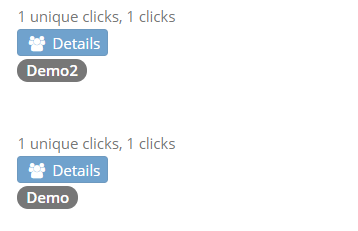
For more information on setting up tags, see Tags.
Trackers
Via 'Trackers' additional information can be added to a Hyperlink to ensure that the hyperlink is recognized by external systems. For example, a 'Google Analytics tracker' can be used to link data on website traffic to an email campaign.
A tracker is selected, per link, from a drop-down list. Trackers must be predefined.
For more information on setting up trackers, see Trackers.
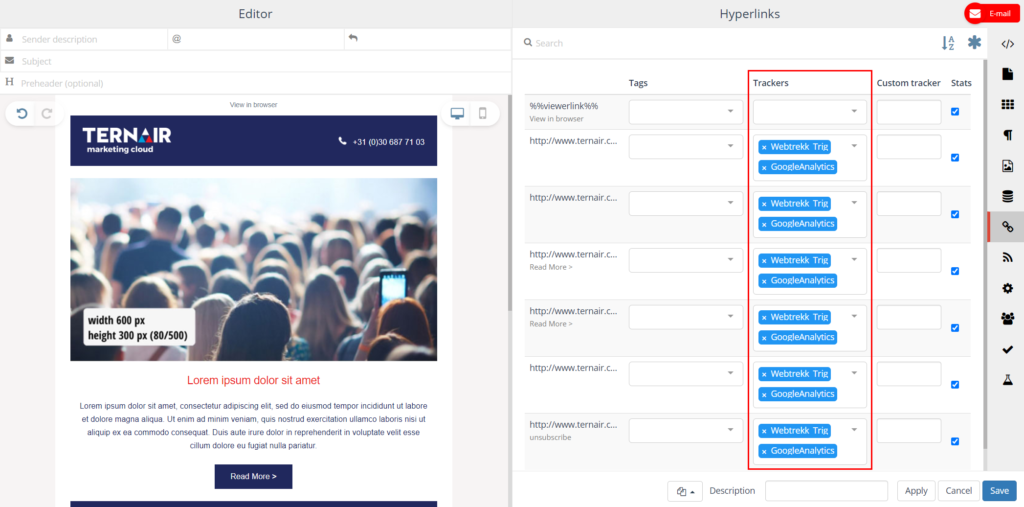
Custom tracker
The "Custom tracker" can be used to define a tracker to be used only in the current selection. Like a tracker, a custom tracker query can contain both a default value (e.g., link=1) and a personalized value (e.g., [TID] or [campaign code]). The maximum length for a custom tracker is 256 characters. An error message (red outline) will be displayed if a tag exceeds the maximum length.
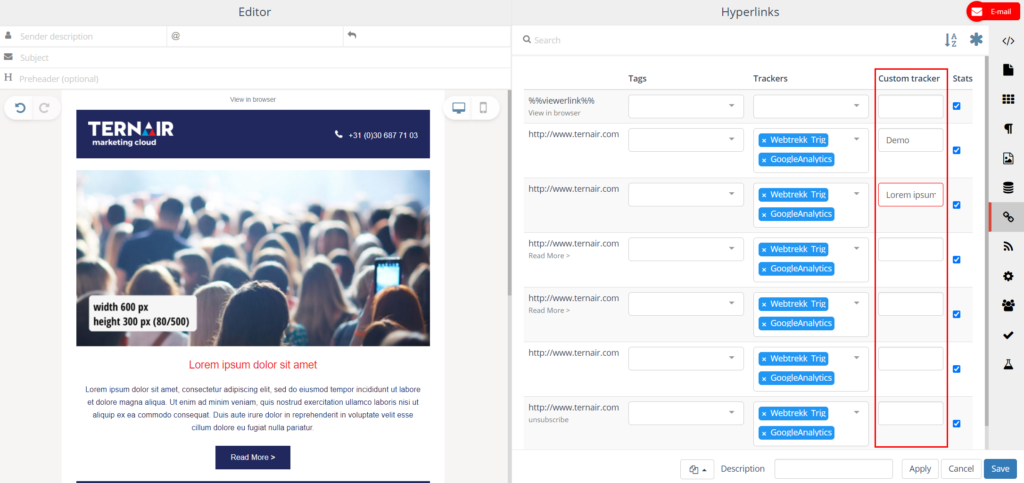
Stats
For each link, specify whether or not statistics for a hyperlink should be included in the email report by checking/unchecking the field in the Stats column. All hyperlinks will be included in the reports by default.
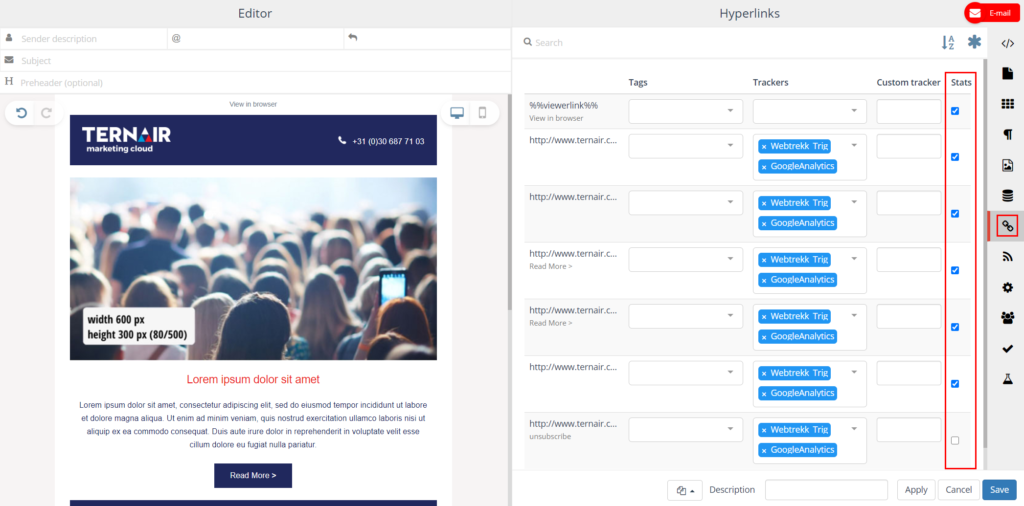
Applicate Wildcards
By clicking on the 'Apply Wildcards' button, all configured wildcards (hyperlinks/ tags/ statistics) will be applied to the content of the email block. Wildcards can be configured in the general settings.
Please note that applying wildcards overrides the manual changes/removals of trackers/tags/statistics made in the email blocks.
For more information on stats and wildcards, see Statistics.
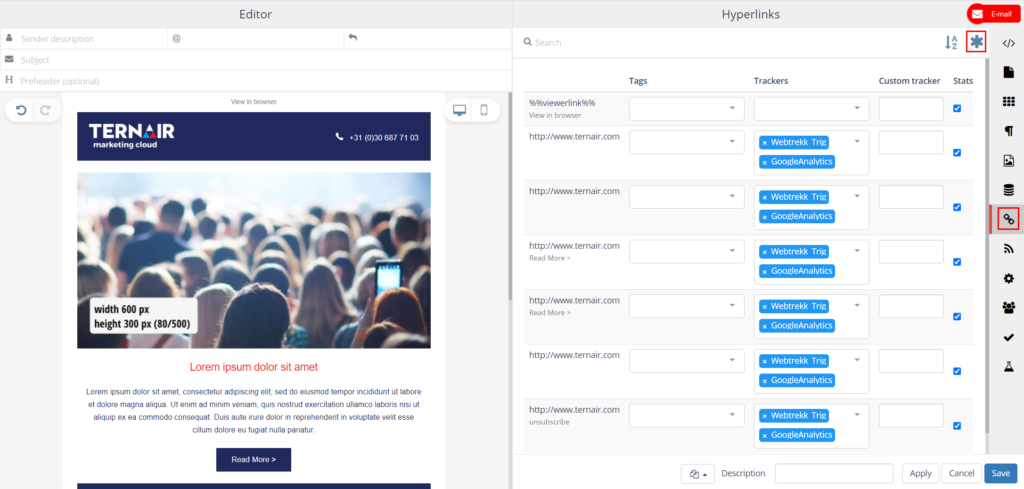
Best practice
In order to use UTM trackers as uniformly and clearly as possible, our recommendation is to set them up as follows:
utm_source | <name organization> |
utm_medium | |
utm_campaign | <name selection> |
utm_content | <name email block> |
This way you can see exactly where the customer/visitor came from (own communication or an external channel), if/when they came in through the email channel, what selection prompted them to do so, and specifically what email within that selection.
This is a uniform way of tagging that can be implemented in all communications. This always makes it immediately clear where a click came from. Examples could include:
UTM-tag | Example 1 |
|---|---|
utm_source | Ternair |
utm_medium | |
utm_campaign | 2022_customer satisfaction survey |
utm_content | Customer_first_reminder |
Or, in the case of other channels / expressions:
UTM-tag | Example 2 | Example 3 |
|---|---|---|
utm_source | Ternair | |
utm_medium | social media | |
utm_campaign | 2022_customer satisfaction survey | 2022_customer satisfaction survey |
utm_content | banner_home page | advertorial_december |
Please note: it is important to think carefully about the naming convention of selections and email blocks. For example, the selection name will need to show which marketing campaign is involved.
A fifth tag available in Google Analytics is utm_term, created for search terms from search engines. This can be added in the email editor, at hyperlinks, as a custom tag. One option is to name the purpose for buttons / CTAs. For example 'content', 'data enrichment' or 'conversion'. You then enter: utm_term=content.
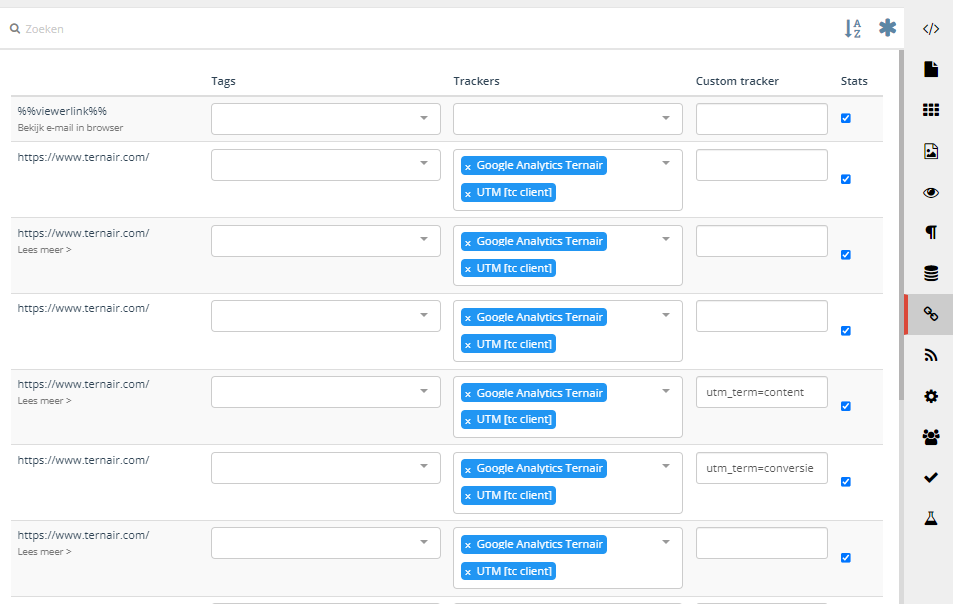
Do you want to see more feedback in Google Analytics and can't get by with these available tags? We can think along to deploy custom dimensions in Google Analytics for this purpose.